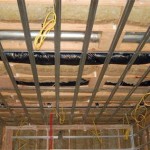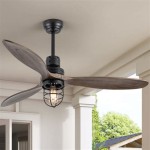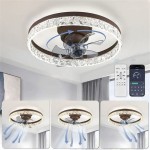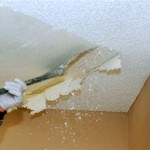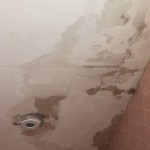How to Remove Stains from Ceiling
Ceiling stains can be an eyesore, marring the aesthetic appeal of a room and raising concerns about potential water damage. Whether the stain is from a water leak, smoke, or another source, effective removal is essential for restoring the ceiling's pristine appearance. This guide provides a comprehensive approach to tackling these unsightly blemishes, offering practical advice and step-by-step instructions for various stain types.
Identifying the Source of the Stain
The first step in tackling any ceiling stain is determining its source. This information is crucial for choosing the right cleaning approach and preventing future staining. Consider these factors:
- Water Leak: If the stain appears damp or discolored, a water leak is likely the culprit. Inspect plumbing fixtures, pipes, and roof areas for potential sources. Addressing the leak is paramount to prevent further damage and staining.
- Smoke Damage: Black or brown stains often indicate smoke damage from a fire or malfunctioning appliances. Ensure proper ventilation to eliminate smoke odors and prevent further staining.
- Mold or Mildew: Dark patches with a musty odor suggest mold or mildew growth, which can be a health hazard. Proper ventilation and drying are essential to prevent these organisms from multiplying.
- Paint or Wallpaper: Less severe stains could be due to paint or wallpaper discolouration. Identifying the source of these stains helps determine the appropriate cleaning approach.
Cleaning Techniques for Different Stain Types
Once the source of the stain is identified, select the appropriate cleaning approach. Here are some effective techniques for common ceiling stains:
1. Water Stains
Water stains can be tackled through various methods:
- Bleach Solution: For mild water stains, a bleach solution can effectively remove discoloration. Mix one part bleach with three parts water in a spray bottle, apply to the stained area, and allow it to sit for 10-15 minutes before wiping clean with a damp cloth.
- TSP (Trisodium Phosphate): A stronger solution like TSP can be used for stubborn water stains. Follow the manufacturer's instructions carefully when preparing and applying TSP, ensuring adequate ventilation and wearing protective gear.
- Paint Primer: After cleaning the water stain, apply a primer to prevent it from reappearing. Prime the area thoroughly before painting, ensuring proper adhesion and sealing.
2. Smoke Stains
Removing smoke stains requires a different approach:
- Baking Soda Paste: Create a paste by mixing baking soda and water, and apply it to the stained area. Allow it to dry completely before brushing off the residue. Repeat this process several times until the stain is gone.
- White Vinegar: For lingering smoke odors, spray the ceiling with a solution of white vinegar and water. Allow it to air dry, and repeat the process if needed. This helps neutralize the odor molecules.
- Professional Cleaning: For severe smoke damage, consider hiring professional cleaning services. They have specialized equipment and techniques to effectively remove smoke stains and odors.
3. Mold or Mildew Stains
Treating mold or mildew stains requires caution and specific measures:
- Bleach Solution: Mix a bleach solution (1 part bleach to 3 parts water) and spray it onto the affected area. Allow it to sit for 10-15 minutes before rinsing with water. Ensure adequate ventilation while working with bleach.
- Borax Powder: Sprinkle borax powder on the moldy area and let it sit for several hours before vacuuming it up. This helps inhibit mold growth and prevent its recurrence.
- Professional Treatment: For extensive mold infestations, contacting a professional mold remediation specialist is crucial. They can assess the severity of the problem and implement safe and effective removal methods.
4. Paint or Wallpaper Discolouration
Addressing paint or wallpaper discoloration involves a simpler approach:
- Paint Touch-Up: For minor paint discoloration, simply touch up the affected area with matching paint. Ensure the paint is thoroughly dry before proceeding to the next step.
- Wallpaper Replacement: If the wallpaper is severely discolored, consider replacing it with a new piece. This can enhance the overall appearance of the ceiling and provide a fresh start.
Preventive Measures
Beyond stain removal, preventive measures are crucial to maintain a pristine ceiling. Consider these steps:
- Regular Inspection: Conduct regular inspections of plumbing fixtures, pipes, and roof areas to identify any potential leaks before they cause stains.
- Proper Ventilation: Ensure adequate ventilation in all areas of your home, especially in bathrooms and kitchens, to prevent moisture buildup and mold growth.
- Prompt Repair: Address any water leaks or plumbing issues promptly to avoid further damage and staining.
- Annual Maintenance: Schedule annual maintenance checks for your plumbing system and roof to identify and rectify potential problems early on.
By following these steps, you can effectively remove stains from your ceiling and prevent their recurrence. Whether it's a water leak, smoke damage, or mold infestation, identifying the source, choosing the right cleaning technique, and taking preventive measures are crucial for maintaining a clean and aesthetically pleasing interior.
How To Quickly Easily Remove Water Stains On Your Ceiling Without Painting Melanie Lissack Interiors
How To Remove Water Stains From A Drywall Ceiling
How To Remove Water Stains On Ceilings
How To Remove Water Stains On Your Office Ceiling Permanently A Star Decorators
Popcorn Ceiling How To Remove An Ugly Stain Drywall Repairman Water Damage Repair
How To Remove Stains From Walls And Ceilings The Home
How To Remove Water Stains From Ceiling Tiles Gainey Ceramics
How To Remove Water Stains From Ceiling Tile Perfect Results Youtube
How To Remove Water Stains On Walls Ceilings Priority One Coatings
4 Causes Of Water Stains On Your Ceiling Ways To Respond




